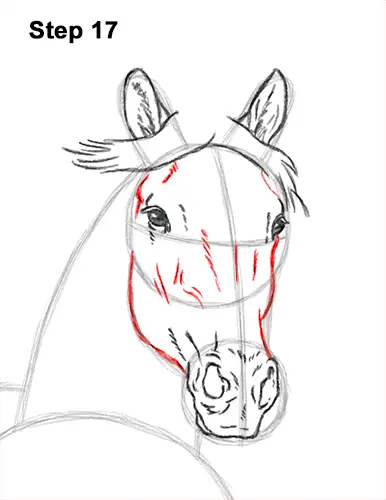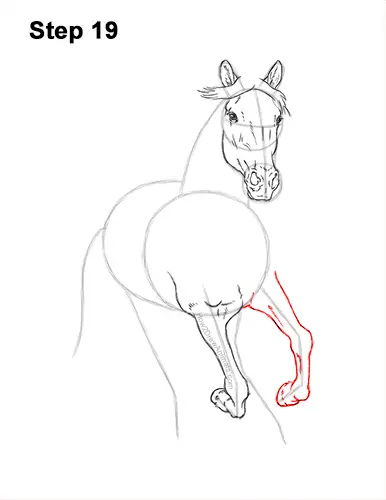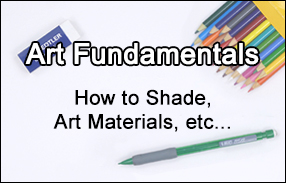
Step 15: Draw a series of long, curved lines at the base of the ears for the front part of the horse's mane. Don't draw every individual hair strand. Instead, draw a thick, curved shape for a chunk of the mane sweeping to the left. Draw another chunk of the mane on the right side using a long line that slopes down to the bottom right.

Step 16: Darken the arcs on top of the head to create the horse's ears. Don't overlap the mane. Draw a few short strokes within each shape for a bit of fur found inside the ears.

Step 17: Use the remaining lines and shapes as guides to draw the rest of the horse's head. On the right side, darken the outer edges of the guides but make the lines around the eyes curvier for more structure. The shape of the horse's head should be wide at the top and narrow at the bottom, directly above the nostrils. Draw a curved line to the left of the eye to emphasize the structure of the bony brow. Make the line on the lower, left side curvier to create the shape of the big, powerful jaw. Add a series of lines within the head to give it more shape and for the veins.

Step 18: Use the second line from the left as a guide to draw the running horse's first front leg. Follow the path of the guide and lightly sketch the shape of the leg around it. Make the top part wide and the middle section narrow. Make the shape bulge out a bit where the leg bends back. Curve the bottom shape back. Add the hoof on the left side and make the bottom edge flat. When you get the shape of the horse's leg right, darken the lines. Be careful as you draw this leg so that you don't confuse the other guide lines. Make the shape of the leg rounder where the joints are. Curve the bottom section back. Make the horse's hoof blocky and add some short strokes along the bottom for the feathering.

Step 19: Use the line on the far right as a guide to draw the other front leg the same way. First sketch the shape of the leg lightly around the guide. Don't make the leg too wide. Draw the edges close to guide to keep the shape thin. Make the shape rounder and bulgier where the guide bends to indicate the joints. When you get the shape of the leg right, darken the lines. The bottom of the leg is bending forward as the horse runs, so curve the shape to the left. Make the top part of the leg that connects to the body wider than the bottom. Make the hoof at the bottom blocky and add some short strokes for feathering.







